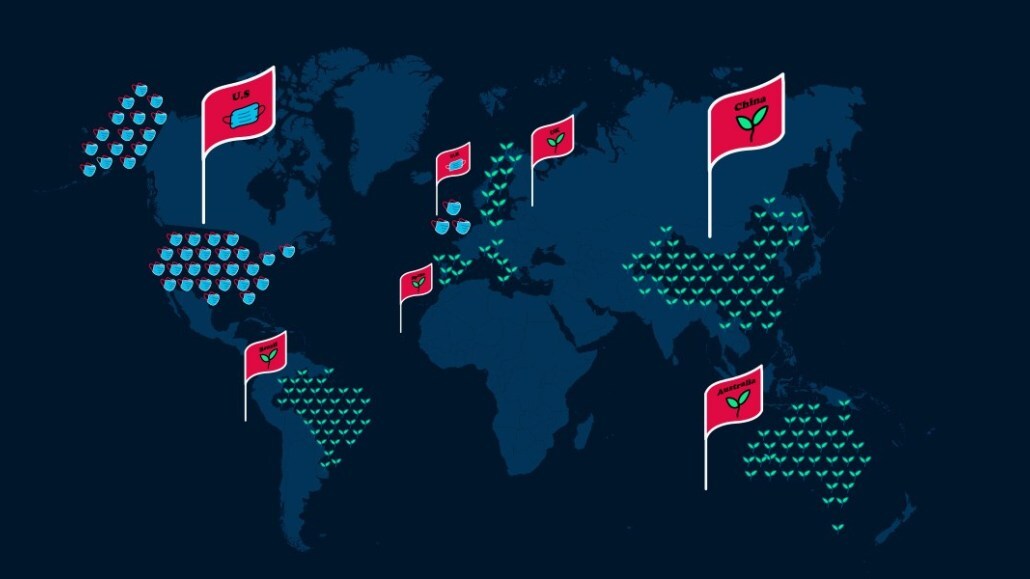With tourist traffic dwindling, Abercrombie & Fitch is accelerating plans to close expensive flagship stores

Even before the pandemic, Abercrombie & Fitch has been on a mission for the past several years to close some of its flagship stores in expensive cities. But now, those plans have been accelerated in order to focus more on the company’s growing e-commerce business.
CEO Fran Horowitz announced during the teen apparel retailer’s third quarter earnings on Tuesday that it would be closing four flagship stores — in addition to three other flagship store closures that had previously been announced announced — within the next couple of months after successfully lobbying landlords to end those leases early. Abercrombie & Fitch opened these flagships, which run tens of thousands of square feet, in places where it wanted to capture major traffic from tourists. Locations included London, Paris and Munich.
By closing these expensive flagships that mostly targeted out-of-towners, Abercrombie & Fitch is shifting its focus to rolling out services at existing stores that are more designed for its local customers, like curbside pickup. The idea is to use these new programs to better serve local customers — particularly so now, when most people aren’t traveling. The United Kingdom’s Office for National Statistics reported that in June, for example, the U.K. received just 5% of the international visitors it received in June 2019.
“We continue to believe in stores and that mindset has not changed, but as we said before, they must be the right size, in the right location, with the right economics,” Horowitz said during Tuesday’s earnings call. She added that the seven flagship stores Abercrombie & Fitch is closing between now and January represented about 10% of Abercrombie & Fitch’s global square footage, but only accounted for 1% of revenue in fiscal 2019 , and “have taken an outsized portion of our time and resources for years.”
Abercrombie & Fitch, like other apparel retailers has taken a sales hit from the coronavirus, but the company has still been able to report a profit the last couple of quarters by cutting costs. On Tuesday, Abercrombie & Fitch reported that net sales were down 5% year-over-year during the third quarter, but recorded a net income of $42.7 million during that period. Meanwhile, digital sales were up 43% year-over-year.
Horowitz said that Abercrombie & Fitch currently has 849 stores, down from 861 at the end of fiscal year 2018. Abercrombie & Fitch has been trying to negotiate as quick of an exit as possible from its flagship stores, though some of their closures have been determined by lease end dates. Horowitz said on Tuesday’s call that Abercrombie & Fitch was able to negotiate an early exit from two flagship stores, each of which were scheduled to end sometime between 2022 and 2031, while securing a sublease for another. In addition to closing down these flagship stores, Abercrombie & Fitch has also been experimenting with new store formats, like opening four pop-up stores for its once-defunct underwear brand, Gilly Hicks last year.
Between 2005 and 2014, a core part of Abercrombie & Fitch’s store strategy was opening these big flagship stores in large tourist hubs that the company believed would help them drive brand awareness. “These were incredibly successful, but carried a considerable price performance elevated construction cost high rents well-above average operating costs, and unfavorable lease terms that tended to be significantly longer than those of our mall stores,” Horowitz said during a company earnings call last year. She described the flagship model as being representative of “a different era” in retail. As more of Abercrombie & Fitch’s sales moved online, those expensive flagship stores started to drive fewer sales.
“Given the heightened importance of digital marketing with today’s consumer, the relevance of these [flagship] locations has always been in question,” Neil Saunders, managing director of GlobalDataRetail told Modern Retail in an email. “However, with the pandemic having disrupted trade in cities and reduced tourist numbers the presence of such expensive store for a mainstream brand is even more questionable.”
Horwitz said that Abercrombie & Fitch’s goal now is to focus more on the local customer — and adding more fulfillment services to accommodate that customer. Abercrombie & Fitch, like other retailers, just rolled out curbside fulfillment for the first time during the pandemic, and as of August curbside pickup was up in running at 80% of its stores. Abercrombie & Fitch has also enabled ship from store at an undisclosed number of locations since the start of the pandemic, but it’s still not available at all locations.
Saunders said that curbside pickup has been more difficult for a retailer like Abercrombie & Fitch to roll out because of the fact that many of its stores are still located in enclosed malls.
“In this regard, it has been more reliant on whatever services mall owners have put into place for all their tenants,” said Saunders. “This puts it at a slight disadvantage to retailers like Target and even Kohl’s where curbside is a big driver of trade.”
In preparation for the holidays, Horowitz said that Abercrombie & Fitch did open a pop-up distribution center in preparation for November and December, as well as added additional carrier partners. Abercrombie & Fitch’s website is currently advising customers to place their orders by December 4, in order to receive by December 25, if they use standard shipping. That indicates the company is still bracing for a huge crush on its logistics the next few weeks.
“Abercrombie & Fitch has coped well with increased online volumes. However, it has a very focused distribution model which is run out of Ohio,” he said. “Having greater capacity to ship from store would help balance the load, but it is complex to introduce.”

